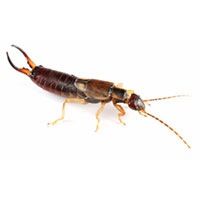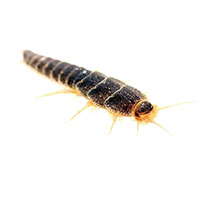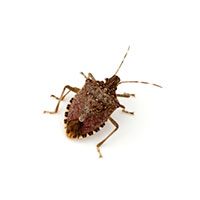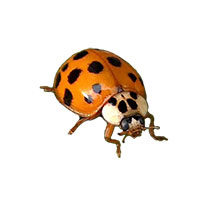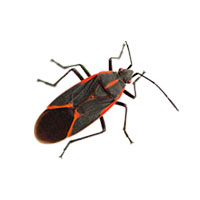Earwigs in Wisconsin
Earwigs get their name from the unfounded superstition that the pests crawl into the ears of sleeping humans in order to bore into the brain. While the insects exhibit no such behavior, they are still prominent household pests throughout the world.
Earwig Diet
Earwigs enjoy a varied diet that mostly consists of plant and animal matter, regularly consuming leaves, fungi, aphids, flies, fruits, vegetables, flowers, spiders, caterpillar pupae, beetle eggs, and springtails.
Earwig Habitat
Earwigs usually live outdoors feeding on plant material. Indoors, they are found in cracks and crevices and under furniture and carpeting.
Earwig Life Cycle
Eggs
After mating in the late summer, females lay 30 to 55 eggs, which they gather and store in a shallow hole. The female will then stand guard over the eggs and coat them with a protective layer of saliva. Depending on the weather, the eggs hatch between 20 and 70 days.
Nymphs
Newly emerging earwigs are called nymphs and undergo four nymphal instars of development.
Adults
Developing earwigs reach adulthood in August or September, when they become sexually mature and start to mate.
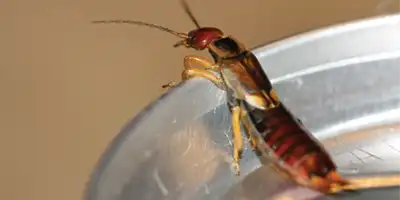
Earwig Damage
Earwigs nibble on and damage the leaves and flowers of plants. The damage caused by adult earwigs is not enough to kill or seriously harm plant life, but the insects are capable of creating long-term problems related to the health and vitality of vegetation. Indoors, humans tend to find pests annoying and even frightening or repulsive.
Signs of an Earwig Infestation
Smell
Crushed or otherwise disturbed earwigs release an odorous, yellow-brown liquid.
Evening Activity
Earwig activity often occurs at night.
Plant Damage
May notice adult earwigs burrowed in the soil around plants, which may be missing parts of their leaves as a result of the feeding habits of the pests.
Earwig Prevention & Control
Earwig Prevention
The best course of action to stop earwigs from entering the home is to take preventative measures, including:
- Exclusion: Even with the use of screens and other barriers, earwigs prove difficult to keep out of buildings. Caulk all crack and crevices.
- Remove hiding spots: The pests frequently take refuge and mate under boards, in tree holes and under bark, and beneath stones.
- Remove nesting sites: While it is difficult to eliminate all potential nesting sites, removing piles of leaves, grass clippings, and similar debris is a good place to start.
- Moisture: To reduce the level of moisture around the home, residents should fix leaky pipes and replace poorly positioned downspouts and broken irrigation systems. To reduce moisture indoors, consider a dehumidifier.
Earwig Control
Your Batzner Service Specialist will come to your property to identify the source of the earwigs and determine the proper treatment method. Control begins outdoors by the removal of moist harborage sites, such as woodpiles, landscape timbers, stones, rocks, etc. The yard should be weeded and flower beds should not be over-mulched. Prevent entry into buildings by caulking gaps around siding, windows, doors, pipes, and wires.
Once an infestation has already been established, targeted pesticide applications will need to be used. If the infestation becomes uncontrollable and large enough to require the application of professional products, count on a professional pest management service to take care of the problem knowledgeably and successfully.
Need help with Earwigs?
We'll call you! Leave your information below.

